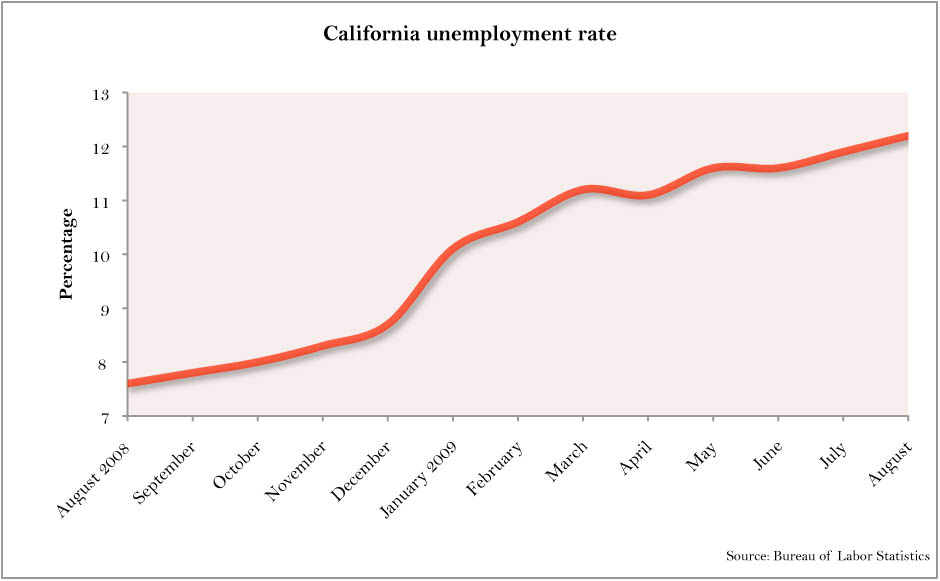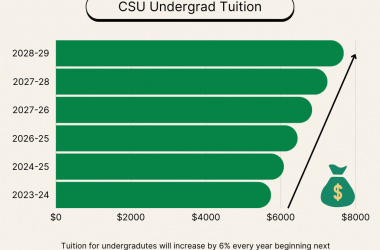The unemployment rate in California reached 12.2 percent in August, double the rate from January 2008.
The rate reached 12.5 percent in the Los Angeles and Long Beach region.
Another economic indicator that is more difficult to track, and often receives less attention, is underemployment, according to a Bureau of Labor Statistics representative.
There are several categories of underemployment. These are called alternative measures of labor underutilization, tracked by the bureau.
One category is when an employee is forced into working a job that is below their skill level. Caroline Helms, an Asian studies major, recently took a demotion at the Whittier Public Library rather than losing her job completely.
“Our hours were cut,” Helms said. “Because we have less hours, they didn’t need as many people working.”
Another type of underemployment is when an employee who wants full-time work is forced into working a part-time job. Discouraged workers are also included — that is, potential workers who have been unemployed for a long period and have given up on looking for work.
The most current numbers on underemployment provided by the Bureau of Labor Statistics are for the third quarter of the 2008-09 fiscal year. The combined number of unemployed people, marginally attached workers and people forced to work part-time jobs due to economic reasons was 17.7 percent of the total population.
About 1.69 million workers are forced to work in part-time jobs, according to the Bureau of Labor Statistics.
Economics professor Andrew Ojede said the federal government does not put as large of an emphasis on tracking underemployment as it does on unemployment.
“It’s not as bad as a problem as it is in poorer countries,” Ojede said.
High underemployment is an indicator of an economy that does not have jobs suitable for its educated workforce.
With seniority being a common measuring stick to decide who is the first to go, younger workers can be the first to feel the loss in jobs or cutbacks in hours. Older, higher-educated workers who have been laid off or have had their pensions cut are also entering the pool of jobs typically held by college students.
Increasing tuition fees do not help in the struggle for enough hours. Helms said the increased fees have made it necessary for her to work more hours.
“I would love to do more to get involved on campus, but because of the economy it’s hard to get the full college experience,” she said.
Freshman Brenda Marquez said she thinks this situation is “wrong and shouldn’t be happening.”
She said, “Everyone is trying to find a job, but things are just getting more competitive.”
Graduate student Nancy Gonzalez feels the effect of unemployment on the community.
“It’s hard to get a job and keep a job,” Gonzalez said. “People are having to change careers [to survive].”
Senior Brandon Armstrong is not too worried and thinks things will get better in his chosen career field: government.
“I think it will be harder for those trying to find a job in the private sector,” Armstrong said.
Junior Nicole Rivera is not sure what the outcome will be for employment in the near future but she said she is still hopeful.
“It’s hard to tell right now,” Rivera said. “It depends on how economic decisions pan out — but it’s a fact of life.”
Joanna Silvestre contributed to this article.




